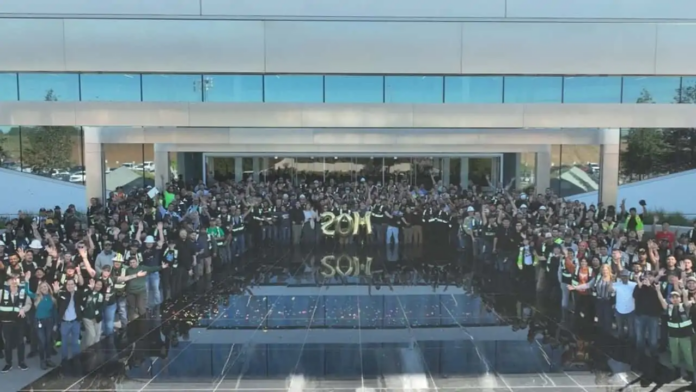Introduction:
Tesla’s announcement of its Giga Texas plant producing its 20 millionth 4680-type cylindrical battery cell is a remarkable achievement that underscores the company’s commitment to revolutionizing the electric vehicle industry. This milestone, reached within a relatively short period, highlights not only the rapid advancements in battery technology but also the potential for Tesla to significantly scale up its vehicle production in the coming years.
In this analysis, we will delve into the implications of this milestone, from production rates and energy output to its impact on the highly anticipated Tesla Cybertruck. We will also explore the challenges and opportunities that lie ahead for Tesla as it seeks to meet the growing demand for electric vehicles and battery cells.

Analysis:
It’s impressive to see the progress being made at Tesla’s Giga Texas plant in terms of 4680-type cylindrical battery cell production. This significant milestone, reaching 20 million cells, indicates a notable increase in production rates.
- Production Rate: The average production rate over the past four months has been estimated at around 2.5+ million cells per month or roughly 600,000 cells per week.
- Energy Output: The estimated energy output from these cells is approximately 7.6 megawatt-hours of energy per day or 53.5 MWh of energy per week, which equates to 228 MWh per month.
- Tesla Cybertruck Implications: Assuming different battery pack capacities for the Tesla Cybertruck (100 kWh, 120 kWh, or 150 kWh), the number of battery cells produced could support a certain number of pickups per week or month. For instance, with a 100 kWh pack, there could be enough battery cells for over 2,000 pickups per month.
- Production Forecast: While the current production rate is impressive, it’s suggested that Tesla may not be limited by battery cell output at this point for certain vehicle models. However, the company is expected to increase its vehicle production significantly in the coming years, especially for the Cybertruck. Production volumes are expected to ramp up, with forecasts indicating that things will become more serious in 2024 or 2025.
- Future Challenges: Even with a conservative estimate of 100,000 Tesla Cybertrucks per year with 100 kWh battery packs, this would require over 110 million battery cells, which is significantly higher than the recent average production rate. This underscores the need for Tesla to further increase its battery cell production capacity to meet future demand.
Conclusion:
The achievement of producing 20 million 4680-type cylindrical battery cells at Tesla’s Giga Texas plant is a testament to the company’s relentless pursuit of innovation and sustainability. The production rates and energy output observed over the past months demonstrate Tesla’s capability to ramp up battery production, paving the way for the mass adoption of electric vehicles. As Tesla prepares to launch high-demand models like the Cybertruck, it faces the challenge of substantially increasing its battery cell output to meet future production targets.
However, with its track record of overcoming obstacles and driving technological advancements, Tesla is well-positioned to lead the electric vehicle industry into a future of cleaner and more sustainable transportation. The journey from 20 million cells to hundreds of thousands of electric vehicles per year is an exciting one, and Tesla’s progress is a sign of the electrifying times ahead.





































